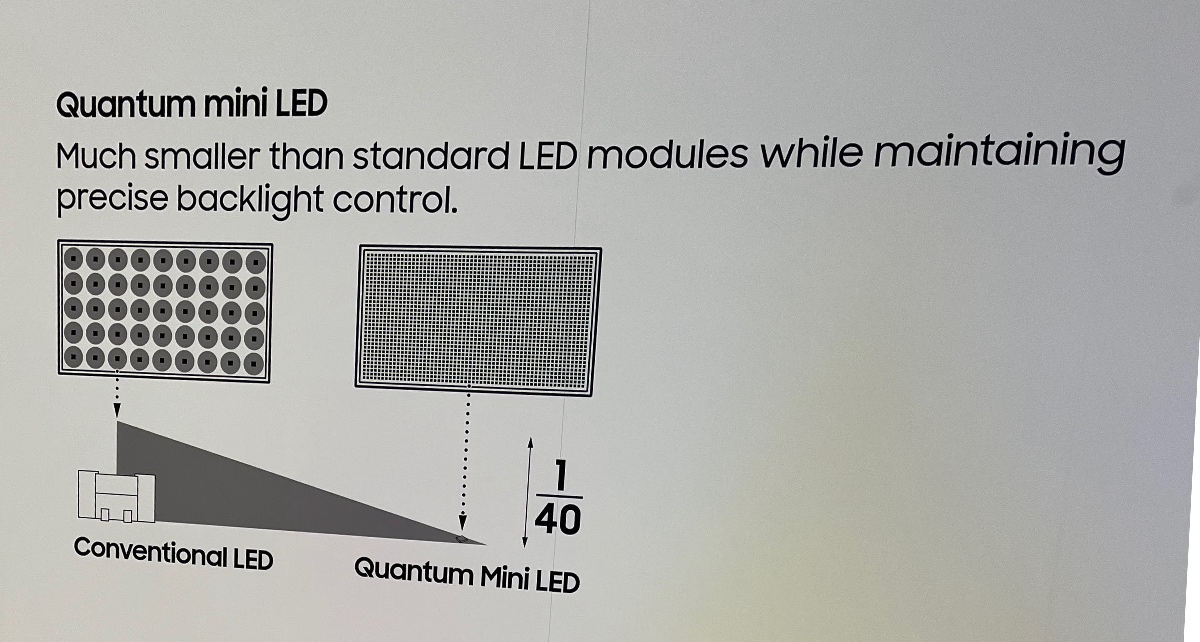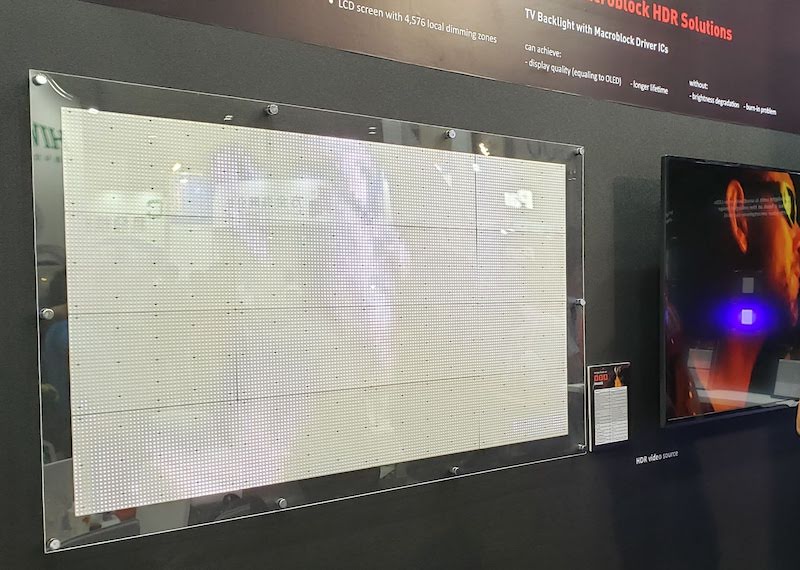
Increasing Use Of MiniLED For TVs Has Spinoff Effect For Fine Pitch LED Video Walls: Research
July 20, 2022 by Dave Haynes
The research firm Omdia says the increasing use of miniLED backlights in higher quality consumer TVs is having the spinoff effect on the commercial LED display business – driving the production of increasingly fine pixel pitches for video walls.
The TV industry has been increasingly using miniLEDs for backlighting in LCD TVs because that technology allows more lighting power to be packed in behind the LCD layer, but also has each light (or small zones of lights) being addressable. Technology that allows LEDs to be dimmed or turned off based on the scene can be a big boost to contrast and overall picture quality.
Says Omdia in a company insights post about the ProAV market:
Recent technology developments of mini-LED backlight TVs and investment in micro LED TVs through competition from the TV industry is not only expanding existing LED supply chains, but also enhancing the overall LED ecosystem. These advancements have been supported and sustained by traditional LED video manufacturers, especially in China, since the LED supply chain is fully established as a global LED supply hub in terms of cost, scale, and efficiency in the past. Another noteworthy innovation of the LED industry is that pixel pitch sizes are becoming remarkably smaller and securing marketability of fine pixel pitch products in response to the TV industry’s expansion within the LED ecosystem.
If you look closely at the photo below, this is a miniLED-backlit TV with almost 4,600 local dimming zones. You can see how the lighting is on, off or dimmed based on the content, as seen with the TV running the same signal on the right.

Just a few years ago, LCD videowalls were used in command-and-control room displays due to the high resolution at affordable price compared to other technologies. However, commercial-grade LCD screens still contained very narrow bezels, preventing a truly seamless videowall experience. More recently, 1.5mm pixel pitch LED videowall displays gradually started to gain attention despite very high prices, since LED screens are the only displays providing a bezel-less alternative to LCDs. Currently, 1.2mm pixel pitch LED videowall displays are becoming common in command-and-control rooms, with 0.8mm pixel pitch products also rapidly emerging.
According to Omdia’s latest release of the LED Video Displays Market Tracker, the report now includes average pixel pitch information, calculated by the weighted arithmetic mean assuming the average density of the pixels distributed on the whole LED display area. For the 1Q22 report, the average pixel pitch of LED video displays being shipped throughout the global market is expected to decline sharply from 3.1mm in 2019 to 2.1mm by 2026. Omdia’s definition of fine pixel pitch (FPP) is LED video products within the <=1.99mm pixel pitch category, with the worldwide average pixel pitch of 2.1mm in 2026 coming close this classification.
The China region reports the fastest decline in average pixel pitch and leads the global trend toward smaller pixel pitch sizes. In the recently published ProAV Vertical Market Viewpoint Service, it indicates that direct-view LED (dvLED) display penetration against flat panel displays in China is the highest amongst other regions, especially in transportation, hospitality/healthcare, and control room sectors. For indoor FPP (<=1.99mm pixel pitch) videowall displays in China, LCD videowalls accounted for 68.9% share compared to LED videowalls in 2019, with Omdia predicting the share of LCD videowalls to decrease to 30% against LED videowall in 2026, referring latest article “video wall solutions: A snapshot of LCD versus LED penetration”



Leave a comment